Kyoto is one of my favourite places in Japan. OK so I have many favourite places but I can’t fly into Japan without at least a few nights in this beautiful city. It’s an amazing place to immerse yourself, relax and enjoy walking, eating, culture and history.

Kyoto doesn’t have a bad public transport system, arriving and leaving through Kyoto station is state of the art. Within the city, the subway has two lines, one running north to south, the other east to west. Outside of that there are buses and the above-ground train lines can be useful around the fringe.
Despite all of those options, Kyoto is a city I like to enjoy mostly on foot. It’s flat, I feel very safe both day and night, it’s quite compact and the food is so darn good I need to work off those extra calories somehow.
This walking tour takes in many of the highlights of eastern Kyoto. It’s about a 10km walk with a dozen or so attractions along the way. That’s too many for many people to do in one day but if you’re short on time and feeling energetic it’s very possible and if not take it as inspiration, pick and choose those which appeal to you most or break it up and complete it over a couple of days, it’ll give you some ideas of what there is to see and do in the area. If you have any questions please ask either in the comments at the bottom or through our contact page, we love talking about Japan with you.
Table of Contents
A Walking Guide to Eastern Kyoto

Along our eastern Kyoto walking trail we’ll visit many highlights and a few special hidden gems. To learn more about each destination click on the read more link which will take you to a more detailed article on that destination.
Kyoto Station
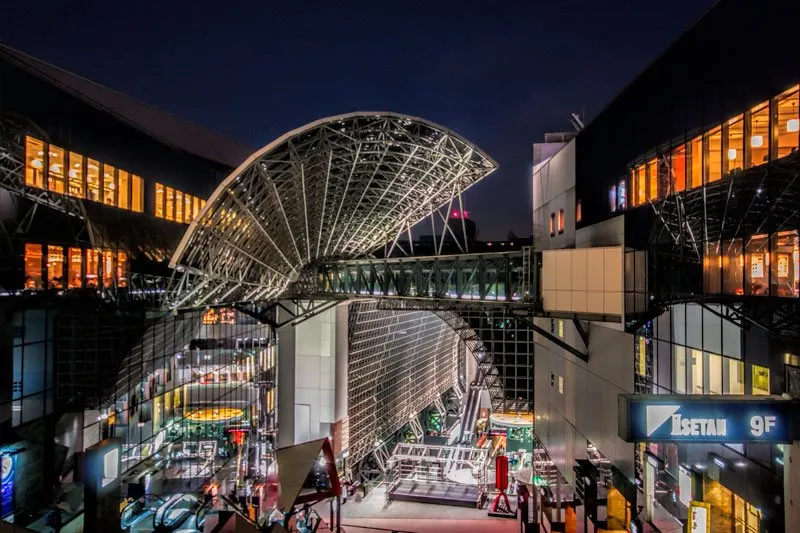
Our starting point for this walking tour will be Kyoto Station, this area is an accommodation hub with many hotels located nearby and you can easily reach it by subway, train or bus. Of course you can pick up the tour at any point along the route or complete it in smaller sections that fit with your timing and energy levels on the day.
Kyoto station is futuristic and a destination in it’s own right. The design is so modern and inspired that there was a fair amount of debate in the heritage city around whether it was appropriate when it was first built but it somehow works and doesn’t detract at all from the incredible hisotry that surrounds it.
You’ll find multiple adjacent shopping centres including Isetan to the right of this photo and Porto accessed just down the stairs outside the door. There are hundreds of restaurants, some inside the station on the other side of the ticket gates, others in the shopping centres and if you go up the many banks of escalators to L10 you’ll find a ramen hall, on L11 you’ll find The Cube restaurant street and if you go up one more level you’ll come to the roof top garden for some fresh air and great views.
If you don’t mind hights I’d recommend checking out that glass sky bridge that crosses the the atrium and allows another perspective.
Once you’re done exploring here lets head off towards Higashiyama and the eastern hills.
Read More: Exploring Kyoto station as a transport hub and destination
Sanjusandendo
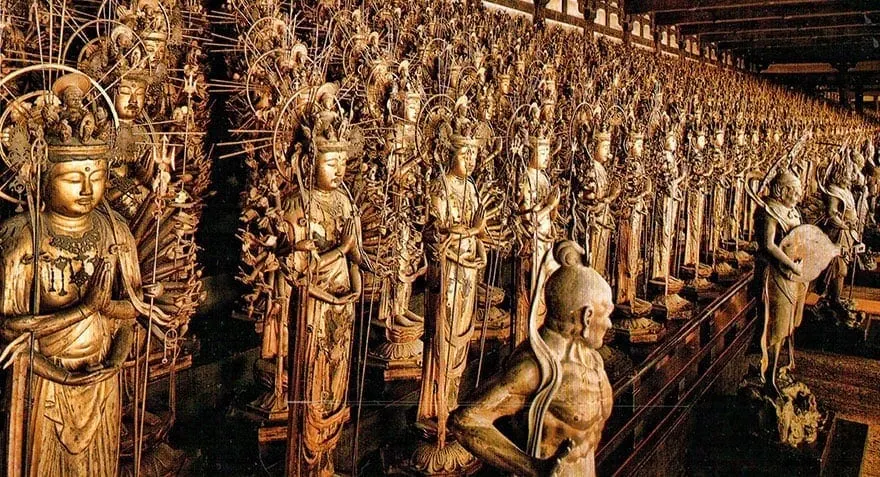
Our first stop on this walking tour is Sanjusangendo. Perhaps I am a little predisposed to love this temple as it was our first stop on our very first visit to the city but I do highly recommend visiting here if you possibly can.
The history of this ancient temple goes all the way back to 1164, its main hall is beautiful and it has a small but gorgeous Japanese garden. What is most incredible about Sanjusangendo though is once you step inside that main hall. You will need to take off your shoes and leave them in a cubby hole at the entrance then enter the main part of the temple.
The temple houses 1001 almost life sized carved and gold plated images of Kannon, the goddess of mercy. It’s quite overwhelming so take your time to look around and take in all the detail, there are also carvings of 28 Buddist dieties, and two gardians, the gods of wind and thunder. The centre image of the temple dates back to 1254 and is a 3.3 metre seated statue of Kannon.
Read More: A visitors guide and the history of Sanjusandgendo Temple
Kiyomizudera and Chawan-Zaka
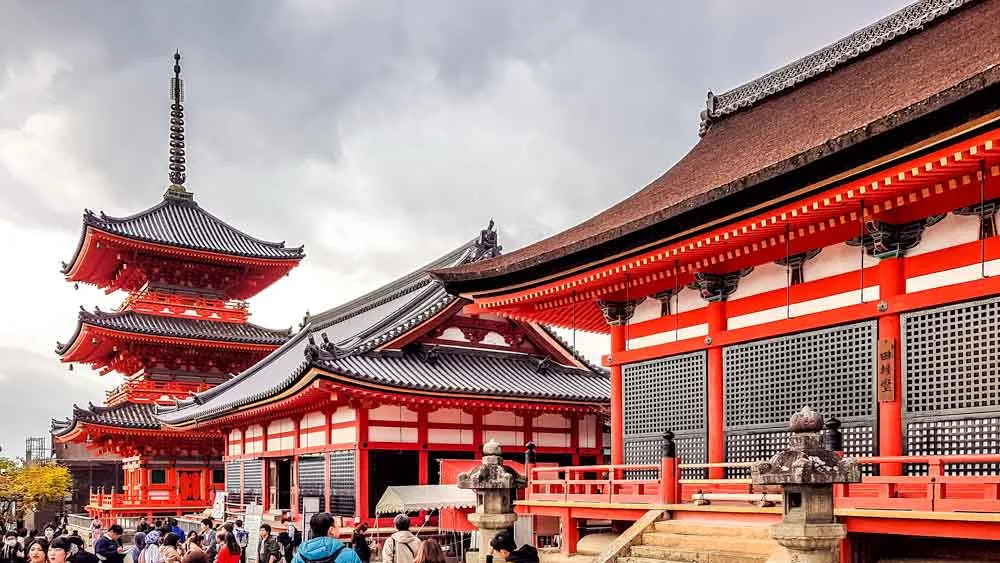
Moving on to our next stop we head north and slightly further east towards Kiyomizudera Temple. You arrive via Chawan-zaka or teapot lane, this is a narrow paved shopping street with wooden merchant houses on either side converted into small stores and restaurants.
The approach is quite steep but you can always reward yourself with a small treat on the way up or stop to browse in the shops. There is a shop that sells the BEST Shu Cream, choux pastries filled with a variety of custard-like fillings including seasonal ones like my favourite, sakura.
A bit further up a lane branches off to the left and just down here is a tiny storefront that offers nikuman that are absolutely delicious as a small savoury treat to warm up on a cooler day.
Kiyomizudera temple complex was founded in 798 and is very extensive. It includes Jishu Shrine, the main temple with its enormous wooden deck all built without the use of nails, a dramatic pagoda, the Otowa-no-taki waterfall that may grant blessings to those who drink from it and a variety of other temple buildings and attractions.
Read More: Exploring Kiyomizudera and Chawan-Zaka
Yasaka-no-to Pagoda and Ryozen Kannon Temple
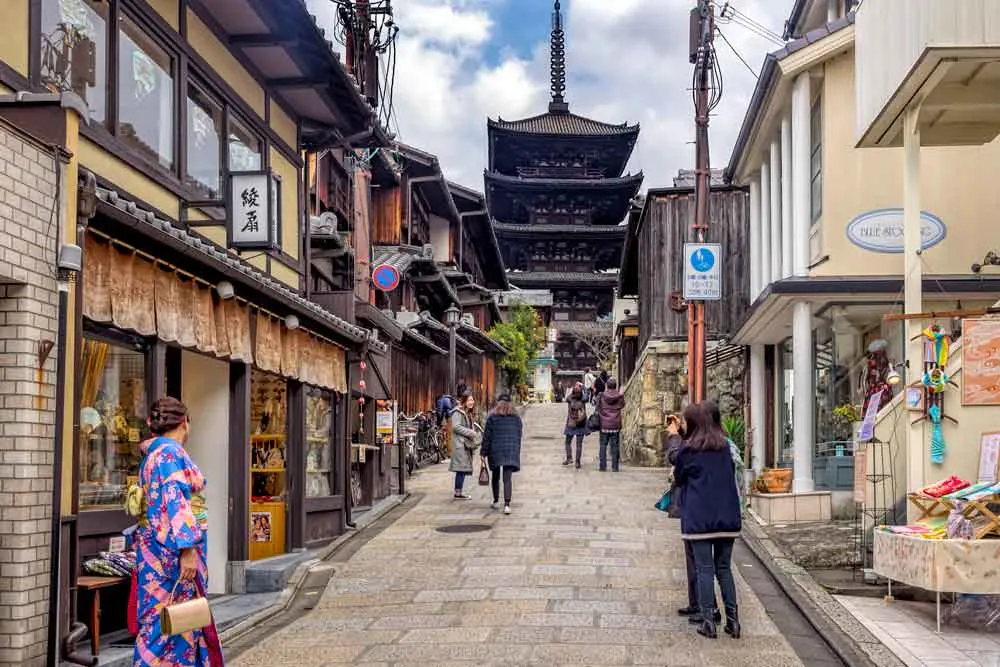
From Kiyomizudera temple we wind further north through the Higashiyama district, there is so much to see and discover as you wander through the laneways. Yasaka pagoda is part of Hokan-ji Temple, as you approach through the old neighbourhood you can really appreciate the ornate pagoda looming up before you, it was originally founded in 589 by Imperial Prince Shotoku.
Just around the corner another dramatic piece is the statue of the bodhisattva Kannon (Avalokitesvara) goddess of mercy. This is part of the Ryozen Kannon temple, a war memorial erected in 1955 to those lost in the Pacific War. I found this an emotional place to visit, it includes a memorial to the unknown soldier, representing the 48,000 foreign soldiers who lost their lives on terriotory under Japanese control during WWII. You are provided with a stick of incense at the entry to offer your own prayer or take a moment in silent contemplation.
Read More: Visit Kyoto’s Ryozen Kannon Temple
Yasaka Shrine, Maruyama Park and Gion
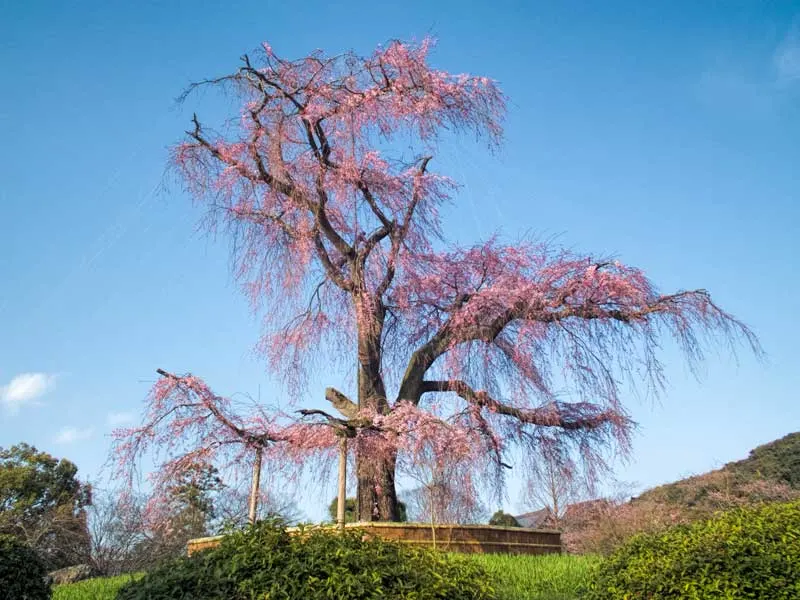
Continuing north you may want to detour a little west as you reach Yasaka Shrine along Shijo Dori, the district of Gion lies behind this street to the right and left. It’s a lovely place to wander through the cobbled streets of tradtional homes and tea houses. You’ll also find plenty of lunch and coffee shop options both on the main street and throughout this area.
Retracing you way back to Shijo Dori and crossing Higashi Oji Dori you will find yourself at the gates of Yasaka Shrine, the main Shrine of the Gion area and one that hosts many events during the year. This shrine is particularly important to the local community including Geisha in the area who will regularly participate in events here. We saw Maiko perform on the main stage here on the eve of Setsubun, it was a community event, very busy but mostly attended by locals. When you have had a look around continue out the back gate into Maruyama Park. This is a popular park especially during cherry blossom season when it lit weeping cherry takes pride of place.
Continuing out of the park through the northern gate you will arrive at Choin-in and then Shoren-in. Both are worthy stops at any time of year but are especially stunning locations for autumn colours.
Read more: About exploring this part of Gion, Yasaka Shrine & Maruyama Park or get extra information on Gion and the other Geisha districts of Kyoto
Nanzen-ji Temple
Slightly further northeast is the sprawling Nanzen-ji a zen temple at the base of the Higashiyama mountains just south of the start of the Philosophers path. The grounds are free to enter but various temples and sub-temples on the grounds have a entry fee.
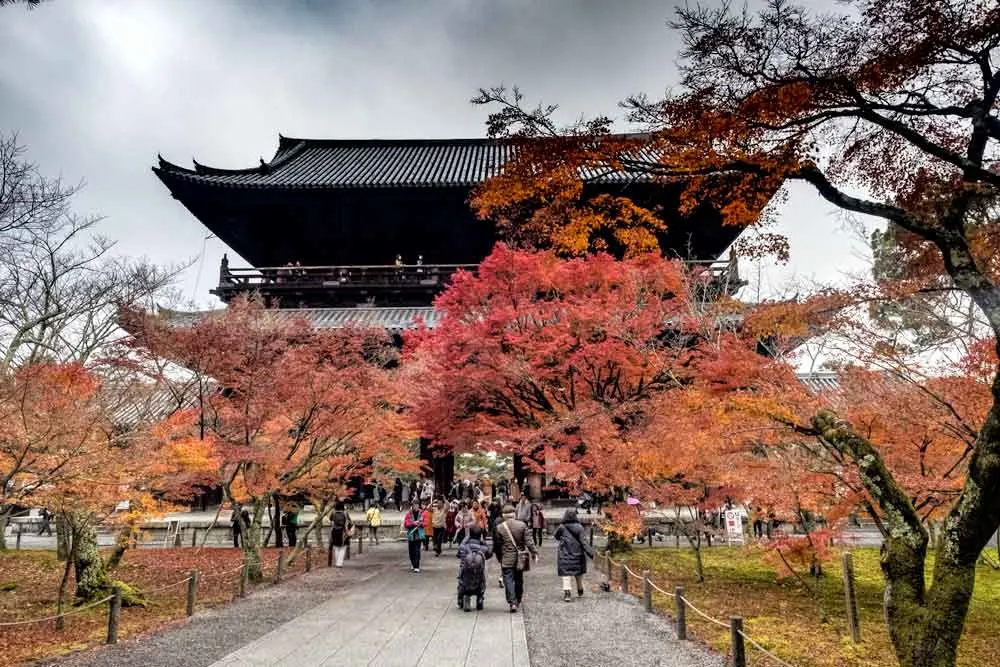
It’s particularly beautiful in spring and autumn but its gardens are worth a visit any time of the year. The massive Sanmon gate shown here was built in 1628 by the Tokugawa clan as a memorial to the soldiers who died in the siege at Osaka Castle.
Eikan-do Temple
Next to Nanzen-Ji is Eikan-do, one of the temples I am most looking forward to revisiting on our upcoming autumn leaves itinerary. It has many interesting small temples and attractions throughout the grounds and the gardens are beautifully kept.
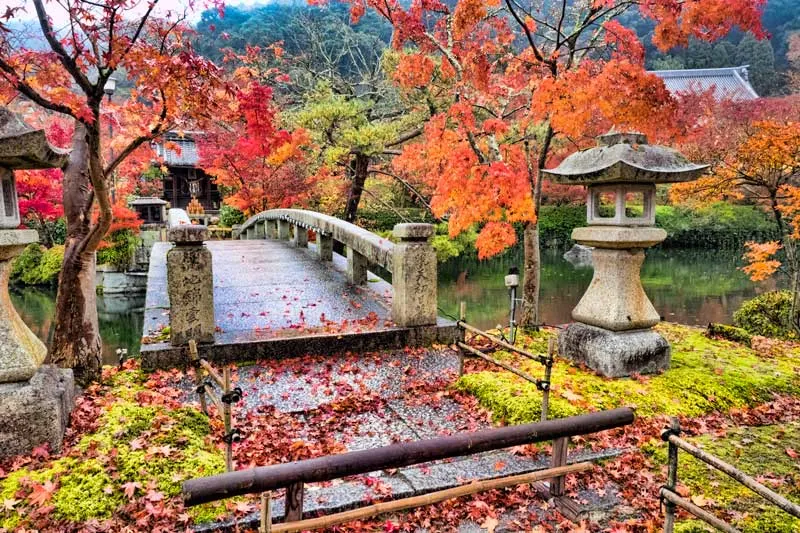
It’s pretty at all times of year but the autumn colours here really are something extra special. We were so lucky to get the timing just perfect.
Read More: A temple for all seasons: Eikan-do in Kyoto
The Philosophers Path
Running along a section of the Lake Biwa canal the Philosophers path was the favourite walk for of the Kyoto University Philosophy Professor, Nishida Kitaro. He would walk the 2-kilometre path twice a day.
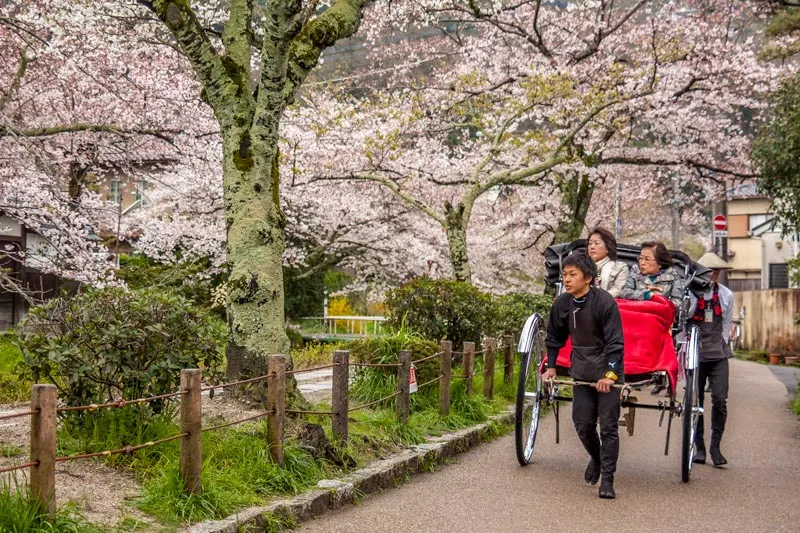
What a fabulous work commute and well worth including in your explorations around Kyoto city. While it is most popular during the cherry blossom season it is an attractive spot all year round and much more peaceful when the cherry trees aren’t in bloom. The weeping willows and cherry trees fresh green foliage gives wonderful refreshing shade in summer too as you walk between temples, small cafes and artisan shops along here.
Read More: Exploring the Philosophers Path in Kyoto
Honen-en Temple
This is a small temple set back from the Philosophers Path into the base of the Higashiyama Mountains. Sitting in the shadow of the eastern hills it is damp and mossy and very beautiful.
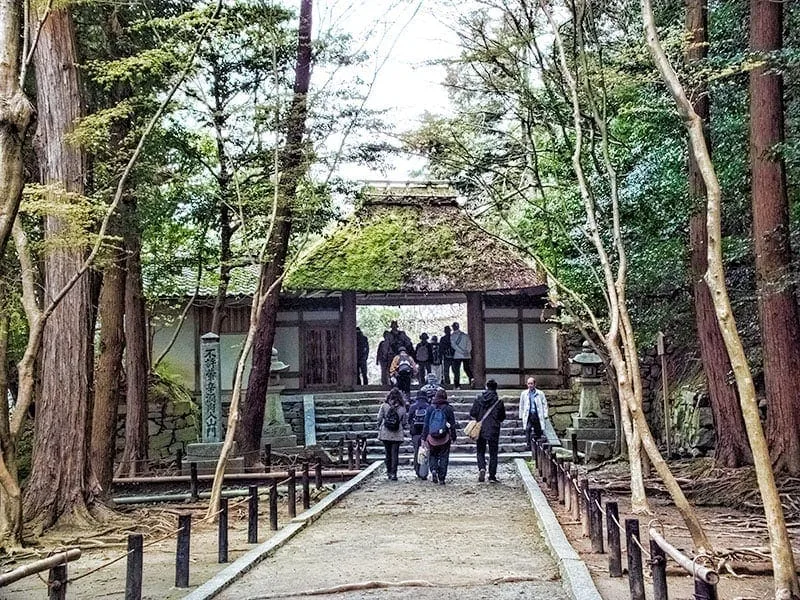
You can enter the temple grounds all year round but the interior of the temple itself only has a few special openings throughout the year so we were lucky to make it to one of these during the spring blossom.
The temple itself isn’t a cherry blossom spot but its shady location means the camellia trees are still in beautiful bloom and are a feature of the inner garden. The painted screens in the traditional rooms are gorgeous and well worth the small entrance fee if you are wavering on whether to do it or not.
Ginkaku-ji Temple
Contrary to its popular name the silver pavilion isn’t covered in silver leaf as Kyoto’s Kinkaku-ji is covered in gold but that doesn’t make it any less spectacular and worth visiting. This temple has great gardens and an important place in the history of Zen Buddhism in Japan as well as many of the Japanese arts including the tea ceremony.
Ginkaku-ji is the last stop on our eastern Kyoto walking trail. We hope you enjoy exploring this incredible area as much as we do. If you’ve done enough walking for the day at this point you can easily catch a bus back to central Kyoto or the station from here. The tourist Raku 100 loop bus is your easiest option as it’s regular and leaves from near the bottom of the shopping street leading up to the temple.
Read More: Ginkaku-ji, Kyoto’s silver pavillion
5 Handy Tips for Exploring Kyoto on foot
1 Old school map. Even if you have a data plan and Google maps on your phone it’s worth picking up a paper map to have in your bag. You can pick them up for free at your hotel or at the information centre inside Kyoto Station.
2 Shoes selection. Wear flat comfortable shoes, buy some especially for your trip if you have to. In Japan people walk a lot and you’re going to enjoy your holiday a whole lot more if you feet aren’t aching and blistered.
3 Try local treats. Eating your way around Kyoto is a big part of the enjoyment. Allow time in your day to stop regularly, try a new tea or coffee shop, sit down for a lunch experience, a treat at the market or small store. Street food isn’t as common in Japan as it is in other parts of Asia but where you find it during festivals and near attractions it’s generally really good.
4 Slow down. To enjoy the experience of the old city you will need some time. Rather than ticking off 20 guide book attractions in a day try to allow time to wander down the lane ways and take the odd ‘wrong’ turn. It’s a very safe city so you won’t end up somewhere you’d rather not be.
5 Getting Home. Take a business card from your accommodation when you check-in. It’ll have the name and location written in Japanese. Japanese taxi drivers rarely speak English in our experience so you can hand them the card. If you get really lost it will help someone direct you accurately on your way home.
We hope you enjoy this walking Kyoto tour of eastern Kyoto with us. It’s a beautiful and fascinating area to discover and on foot at your own speed is the best way to do it.
If you’ve enjoyed exploring eastern Kyoto you may also like our central Kyoto walking tour at 8.5km including taking in Nijo Castle, the Imperial Palace, 2 historical geisha districts, a foodies market and more.
If you found this article useful please consider saving it to Pinterest. It makes it easy for you to find it again, it helps us, and it helps other travellers to find the information they are looking for.
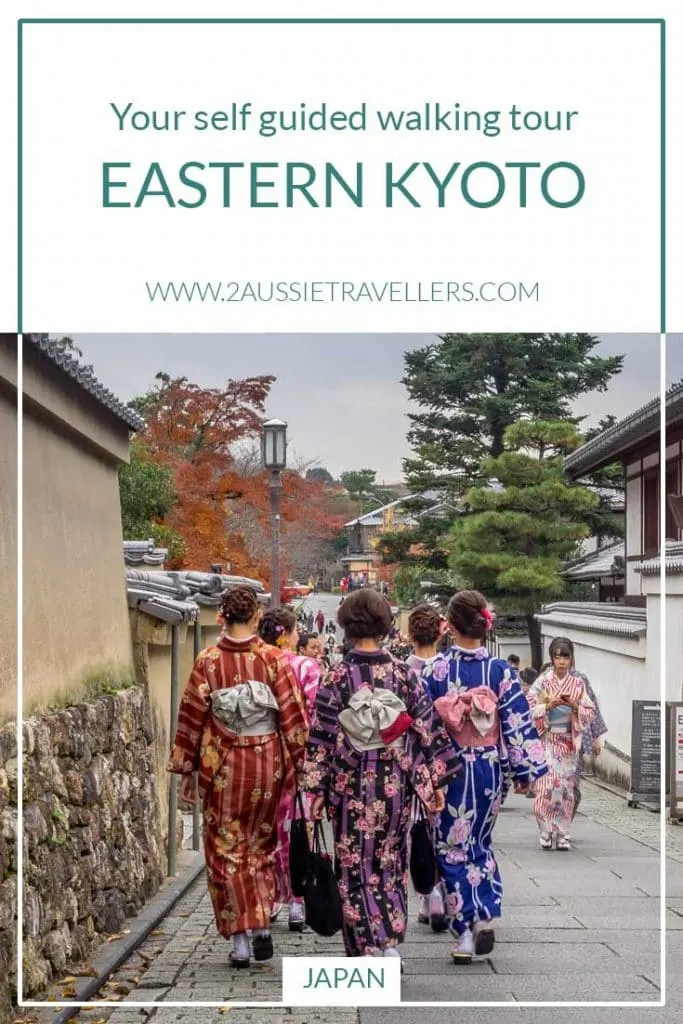
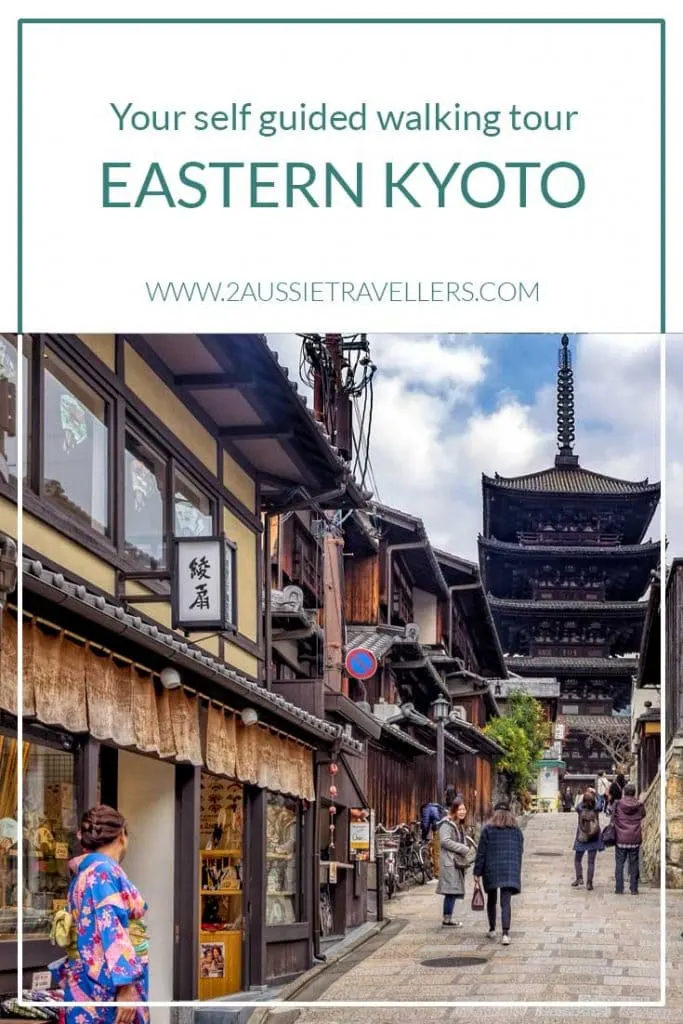
Please let us know if you have any questions in the comments section below or we’d love it if you’d share what your favourite place to visit in Kyoto is and why?
John Twartz
Wednesday 18th of October 2023
Hi there. You obviously like Kyoto as much as my wife and me (also Aussies). We bought a small renovated machiya near Toji Temple in 2014 but now 2023 and in advancing years we’re selling, leaving it fully equipped and furnished. But we’re taking a bucket load of great memories.
Toni Broome
Saturday 28th of October 2023
Oh it will be hard for you to leave after so long, it is a beautiful city, it's difficult enough to move on after a week or two. Will you return to Aus or continue your adventures elsewhere?
Sarah
Sunday 18th of August 2019
Hi! This is a great day itinerary, do you roughly know how long it would take? I plan on getting to Kiyomizu-dera very early (7am) so I can get the most out of the day, but I also would like to do the Kyoto Maikoya tea ceremony this day too (as my other days are exploring other areas of Kyoto). Would you recommend doing the tea ceremony as the last part of the day after visiting Ginkaku-ji Temple, or if I should do it when I get to Gion in this itinerary before heading to Maruyama Park to do the rest? My accommodation is about a 5 minute walk from Gion :) thanks so much!
Toni Broome
Sunday 18th of August 2019
Hi Sarah. The time taken is so dependent on how many of the places along the way you stop to explore and how long you spend at each, I know that isn't much help but at Kiyomizudera alone some people will spend 15 minutes, others several hours. It may also depend if it is a peak season such as autumn leaves or cherry blossom as that slows things down some with more people around. Going to Kiyomizu-dera early will beat the crowds, it's lovely when it's quiet but that does mean the shops and cafes on the approach won't be open, they mostly open between 9-10 am.
You could do it either way but as you are staying in Gion and that's the best area to be in the evening I think I would continue on all the way through to Ginkaku-ji. Then take the local bus route 17 bus back from the Ginkakuji-michi bus stop near the temple later in the afternoon for the tea ceremony. It's 9 stops (20 minutes) back from Ginkakuji to the Kyoto Shiyakusho Mae stop near the tea ceremony. For me I would find it easier to get the most out of the day that way, I prefer not to have book things in the middle if I can avoid it but both options you are considering will work. You could alternatively plan to do the tea session at late morning then take the bus out to Ginkaku-ji and work your way back south along the Philosopher path from there towards Gion.
Vera
Thursday 12th of July 2018
Hello! Thanks so much for the lovely photos and great travelogue. They are very helpful and fun to read! Am planing a trip to Kyoto in 2nd week of Oct (2018) and want to stay in a temple (temples). I'll be in Kyoto for 4 days. Have you experience in temple lodging?
Cheers, Vera
Toni Broome
Thursday 12th of July 2018
Hi Vera, we've visited a lot of temples in Kyoto over the years but haven't done a temple stay so there's nowhere I can suggest from personal experience. Sorry, would love to hear your thoughts on it though, we will eventually get around to doing one on Mount Koya.
Judy
Wednesday 31st of May 2017
Hi, I am planning a trip to Japan for 3 weeks in September, their will be 5 adults, a 12 yr old, 2yr old and infant. I have been following you on Instagram and really needing some help. The first week we plan to stay in Tokyo, then a week in Kyoto, then back to Tokyo. We have been looking on airbnb.ca for accomodations . I am hoping you can suggest an area in Tokyo that is close to popular attractions and trains. Travelling with little ones will be a challenge in itself, so hope you can help.
Clare
Thursday 4th of July 2019
Hi, I am planning a kyoto trip in Oct.May I know where do u recommend to stay? Thanks
2 Aussie Travellers
Wednesday 31st of May 2017
Hi Judy, Tokyo is difficult to decide as there are many attractions and they are very spread out, you can spend a lot of time getting around Tokyo if you don't have a plan. We like Akasaka, the Hotel New Otani is close to a subway station and lots of good eating options. We walk a lot and don't travel with young children so our choices are likely to be different. The Tokyo Station area is probably the most 'central' and we like staying there but hotel rooms tend to be smaller for the price point and a generally a bit more expensive but there loads of eating options, close to all forms of transport (bullet train, train and subway) and the Imperial Palace and east gardens are close. Not sure if you will elect for the Airport Limousine bus rather than train if arriving with little ones but if we want to use that we factor in whether the hotel is on their route especially if arriving during peak times or later at night as it's a easy way to start. It's a personal choice but we stay away from AirBNB in Japan as most tenant agreements in the country don't allow subletting and if you are staying and not meant to be it can be awkward. Are there particular attractions you want to be close to? Something else to possibly consider as a family group is staying out of Tokyo such as Yokohama, the train fare is about $5 and takes around 25 minutes but it's less hectic and you may get better value for money, it can take almost as long getting between some stops in Tokyo.
Victor C. Arias
Thursday 2nd of March 2017
This is the best source of information on Japan Travel. It is so thourough and so "unselfish" with details and options. Thank you for sharing. May you have many more happy world travels. Thank you for sharing
2 Aussie Travellers
Friday 3rd of March 2017
Thanks Victor, we love our Japan travel and encouraging others to explore the country too